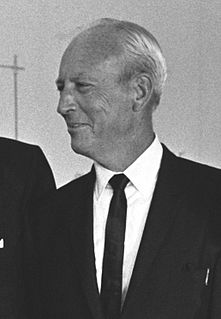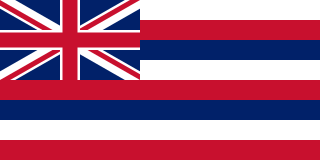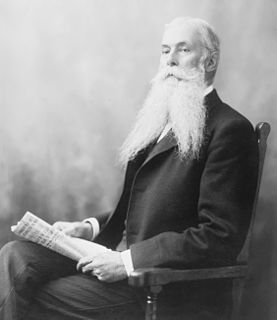It has been requested that the title of this article be changed to List of governors of Hawaii . Please see the relevant discussion on the discussion page. The page should not be moved unless the discussion is closed; summarizing the consensus achieved in support of the move. |
The Governor of the State of Hawaii is the head of the executive branch of Hawaii's state government, [1] and commander-in-chief of the state's military forces. [2] The governor has a duty to enforce state laws; [2] the power to either approve or veto bills passed by the Hawaii Legislature; [3] the power to convene the legislature; [4] and the power to grant pardons, except in cases of treason and impeachment. [2]

The Government of Hawaii is the governmental structure as established by the Constitution of Hawaii, the 50th state to have joined the United States.

In the United States, a state is a constituent political entity, of which there are currently 50. Bound together in a political union, each state holds governmental jurisdiction over a separate and defined geographic territory and shares its sovereignty with the federal government. Due to this shared sovereignty, Americans are citizens both of the federal republic and of the state in which they reside. State citizenship and residency are flexible, and no government approval is required to move between states, except for persons restricted by certain types of court orders. Four states use the term commonwealth rather than state in their full official names.
The Hawaii National Guard consists of the Hawaii Army National Guard and the Hawaii Air National Guard. The Constitution of the United States specifically charges the National Guard with dual federal and state missions. In fact, the National Guard is the only United States military force empowered to function in a state status. Those functions range from limited actions during non-emergency situations to full scale law enforcement of martial law when local law enforcement officials can no longer maintain civil control. The National Guard may be called into federal service in response to a call by the President or Congress.
Contents
- Governors
- Governors of Hawaii Territory
- Governors of the State of Hawaii
- See also
- Notes
- References
- External links
Of the eight governors of the state, two have been elected to three terms, four have been elected to two terms, and one has been elected to one term. No state governor has yet resigned or died in office, nor did any territorial governor die in office. George Ariyoshi was the first Asian American to be governor of any U.S. state. The current governor is Democrat David Ige, who took office on December 1, 2014.

George Ariyoshi (born as Ryoichi Ariyoshi is an American lawyer and politician who served as the third governor of Hawaii from 1974 to 1986. A Democrat, he is Hawaii's longest-serving governor and the first American of Asian descent to serve as governor of a U.S. state. He assumed gubernatorial powers & duties when Governor John A. Burns was declared incapacitated in October 1973 and was elected in 1974, becoming the first Asian-American to be elected governor of a U.S. state or territory. His lengthy tenure is a record likely to remain unbroken due to term limits enacted after he left office. Ariyoshi is now considered an elder statesman of the Democratic Party of Hawaiʻi.

David Yutaka Ige is an American politician serving as the eighth governor of Hawaii since 2014. A Democrat, he previously served in the Hawaii State Senate. In the 2014 gubernatorial election, he won the Democratic primary by defeating incumbent Governor Neil Abercrombie, and won the general election by defeating former Republican Lieutenant Governor Duke Aiona. He won re-election to a second term in 2018.
The longest-serving Governors are John A. Burns (1962-1974) and George Ariyoshi (1974 to 1986), both of whom served 12 years each.

John Anthony Burns was an American politician. Burns was born in Montana and soon became a resident of Hawaii in 1923. He served as the second governor of Hawaii from 1962 to 1974.































